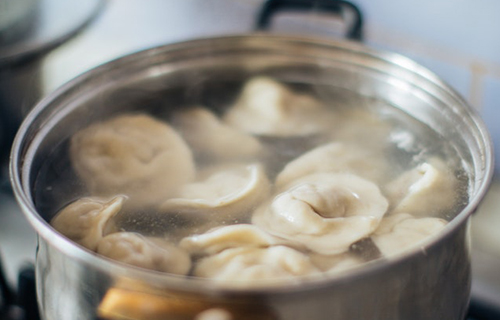
From greasy spoons to five-star fine dining venues, every restaurant relies on hot water – in their kitchens, in their appliances and in their bathrooms. More than half of water use in the average restaurant goes straight to the kitchen, with a sizeable portion used to clean kitchenware and dining ware, according to the U.S. Environmental Protection Agency. As such, it’s incredibly important for all restaurants to focus on the kitchen when they look to both conserve water and increase energy efficiency.
Commercial food service establishments running a traditional hot water heater, however, may be ignoring how truly diverse their water use really is. As a result, they could be missing out on savings. Why don’t tank water heaters cut the mustard in the fast-paced world of foodservice, and what potential gains can restaurant owners achieve by switching to point-of-use tankless water heaters?
“Are circulation loops really worth it for restaurateurs and their budgets?”
Dishwashing and washing stations
Appliances like high-capacity dishwashers represent a substantial hot water expenditure in a restaurant setting, but not sometimes line cooks don’t have the time to wait around for a fresh load of dishes, especially if they’re needed to prepare food for hungry customers. That’s why many restaurant kitchens also have manual washing stations. Both require immediate access to hot water, some traditional tank water heats cannot provide.
To that end, many restaurateurs with tank water heaters will install what are known as “hot water circulation loops,” piping systems that ensure a constant stream of hot water reaches every tap, including appliance hookups. These loops are supposed to be an improvement over unaltered hot water systems running on tanks, which infamously take far too long to pipe hot water to end users and wasting water in the process. But are circulation loops really worth it for restaurateurs and their budgets?
Research from sustainability-minded media outlet Treehugger revealed that although circulation loops retrofitted to traditional hot water heaters may save users on water costs, they are by no means energy-efficient. After all, these systems potentially heat water all day long. In effect, businesses constantly consume energy, even when they’ve closed up shop for the day.
Why not conserve water and energy? Tankless heaters heat only the water needed to get the job done – no more, no less.
Cooking
Commercial kitchens cook in large quantities as a way of saving resources and creating consistent meals. However, the bigger the pot the longer it takes to boil. And the longer the boil time, the more energy expended to heat the water to the proper temperature. If cooks begin a recipe calling for boiling water with very, very hot water, they effectively reduce time to plate without compromising the quality of the food.
Traditional water heaters only operate on one temperature, with little to no control over heat unless users venture to the basement and dial it up manually. Moreover, any changes made to water tank temperatures to saving cooking time in the kitchen will affect every other tap if part of the same network, including faucets customers and staff use to wash their hands in the bathroom.
Do you think a customer scalded on the premises would ever want to eat at your restaurant again? It doesn’t matter how promptly their boiled lobster arrived. The answer is almost certainly, “no.” The next time you see that foodie again will likely be in court.
Tankless water heaters designed for commercial kitchens, like the Eemax ProSeries XTP, can turn one water source into a dedicated hot water tap capable of reaching temperatures of up to 180 degrees Fahrenheit. That way, professional chefs have access to hot water that reduces cooking times, satisfied customers stay safe when they wash their hands and restaurant owners enjoy the profitability of faster customer turnover as well as energy efficiency savings.
Bathroom
While we’re on the subject of hand washing, customers aren’t the only ones scrubbing up before and after a meal. Waiters, hosts and any other employee will also need to sanitize regularly to keep a restaurant immaculate.
But if employees are forced to wait around in the bathroom for the hot water to heat up enough to wash their hands, they could leave a kitchen understaffed and meals cooling before customers have had their fill. To support good hand washing practices for all staff, a point-of-use tankless installed in the employee bathroom will reduce the time it takes for workers to clean up without detracting from the importance of foodservice hygiene.
Restaurants use water in all different ways, so why should they stick with hot water systems that isn’t nearly as versatile as they are?

